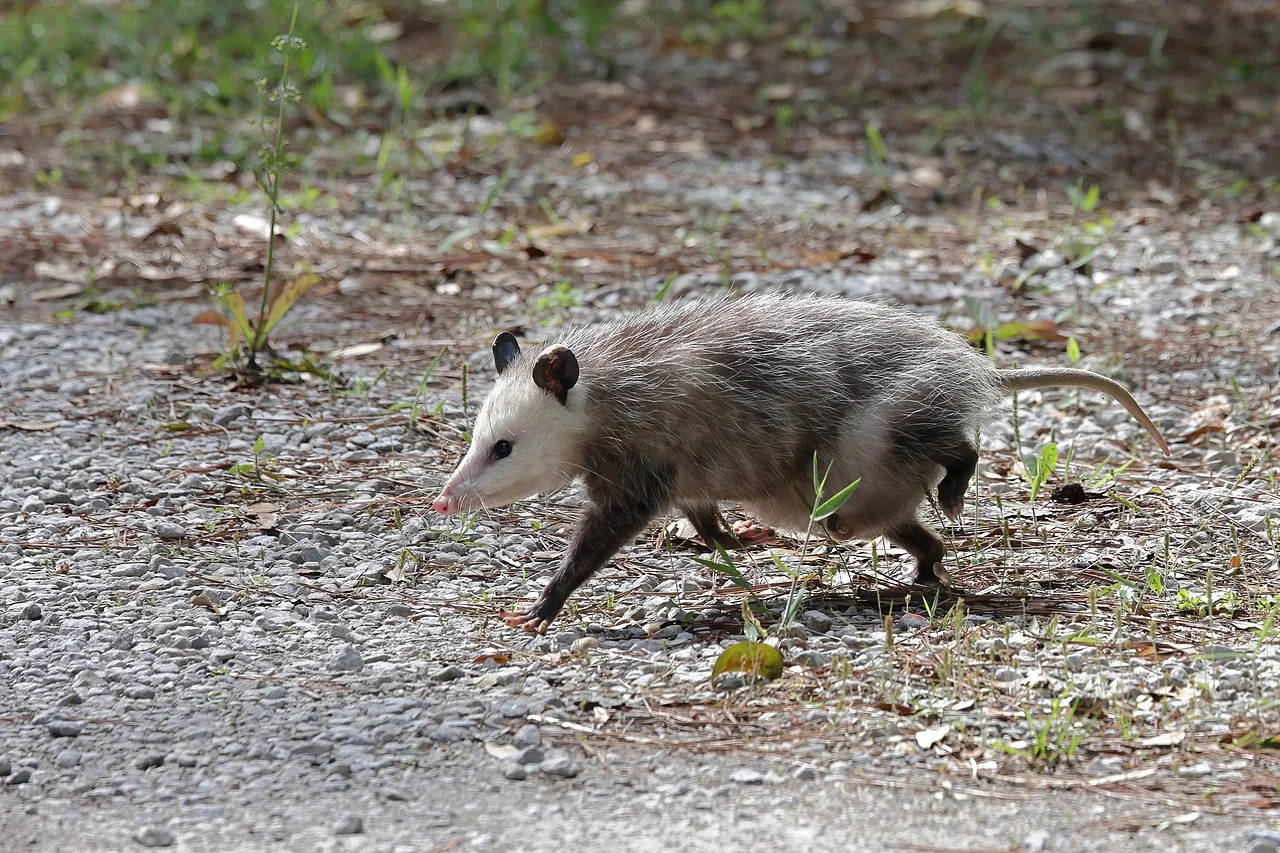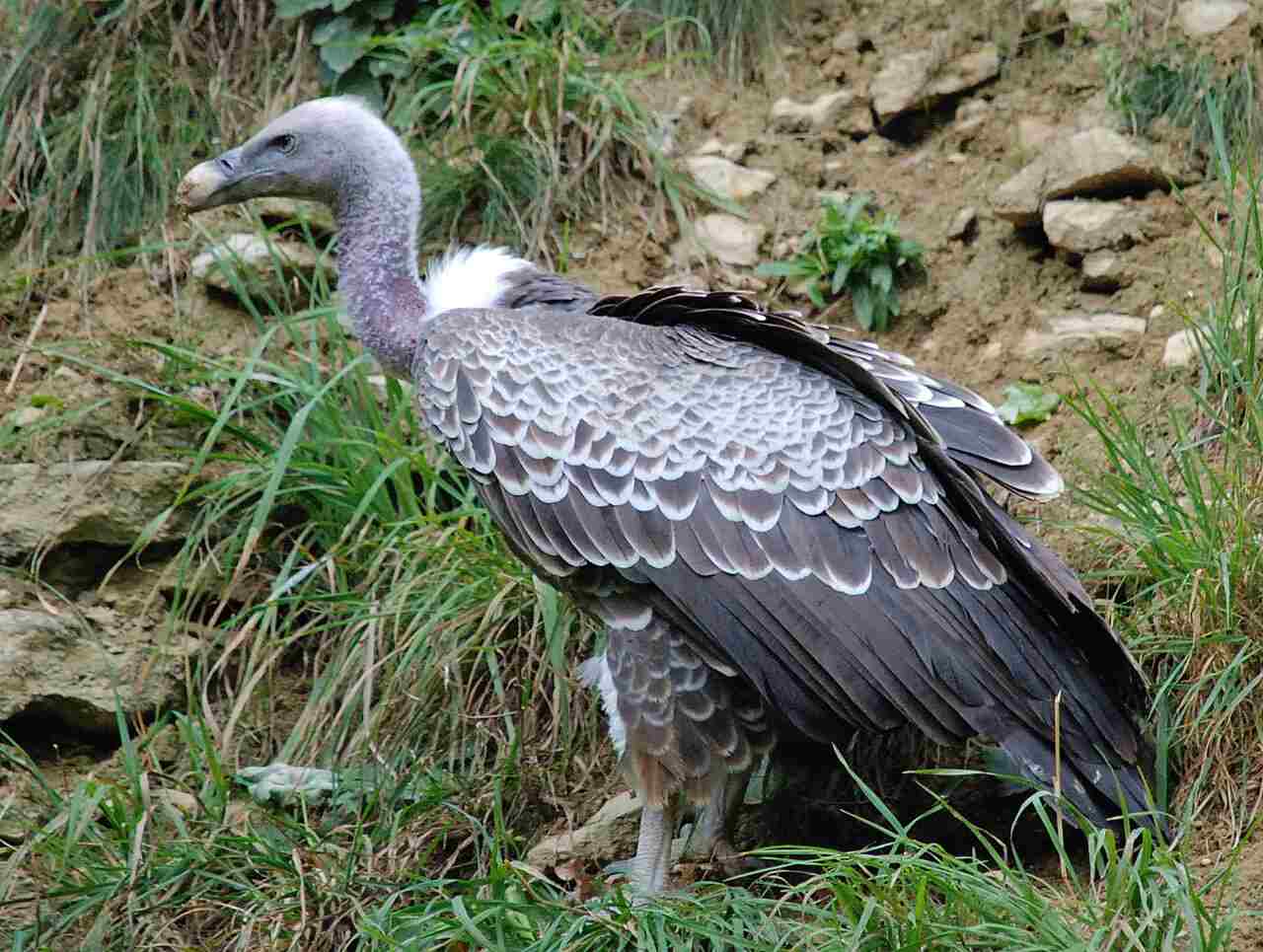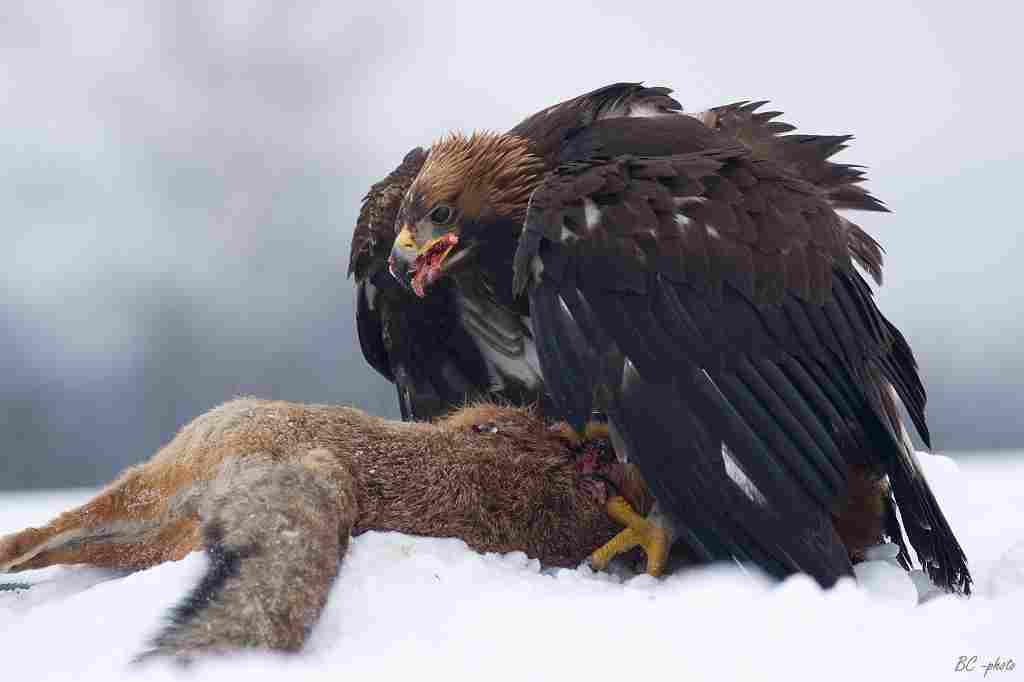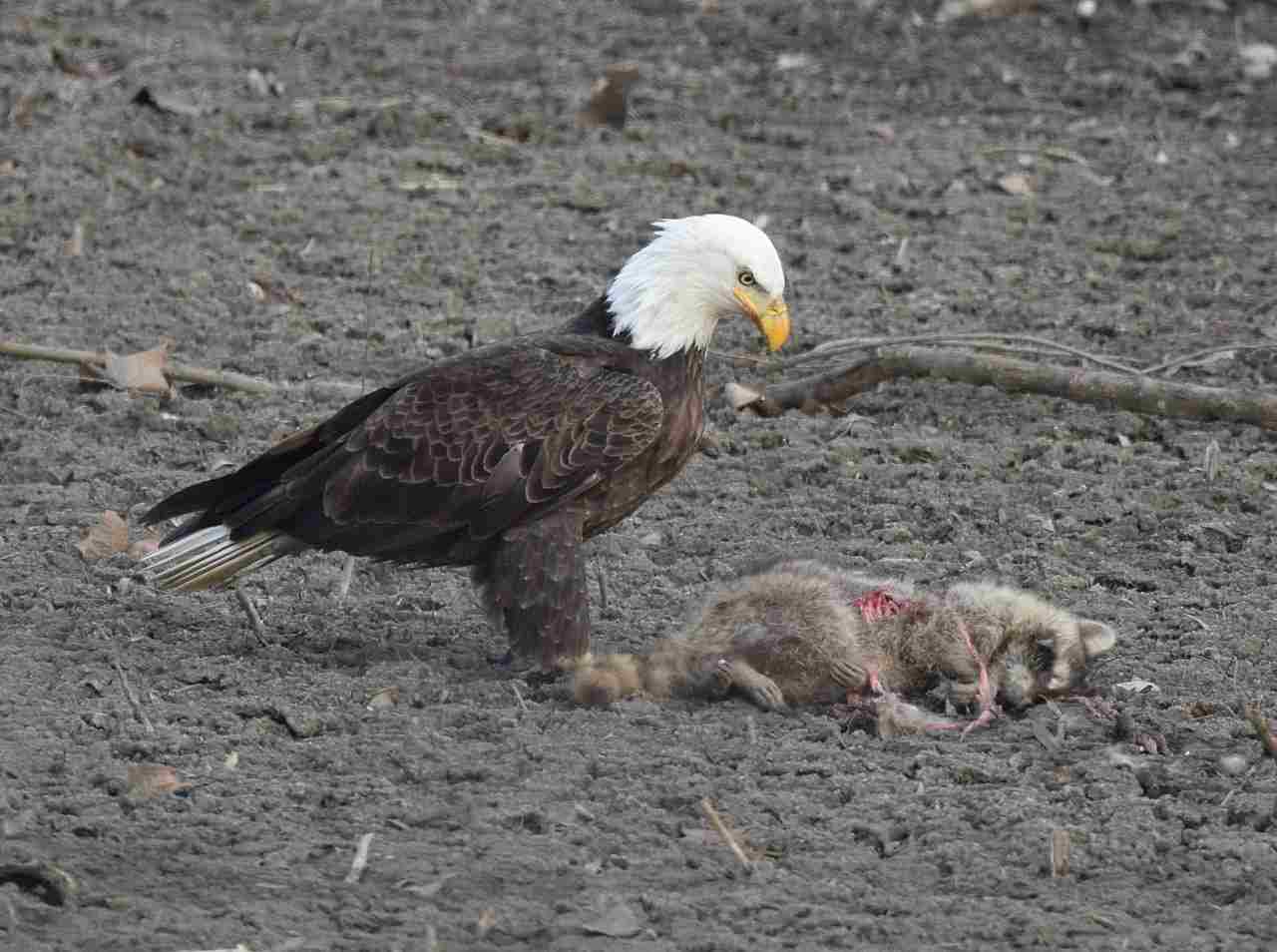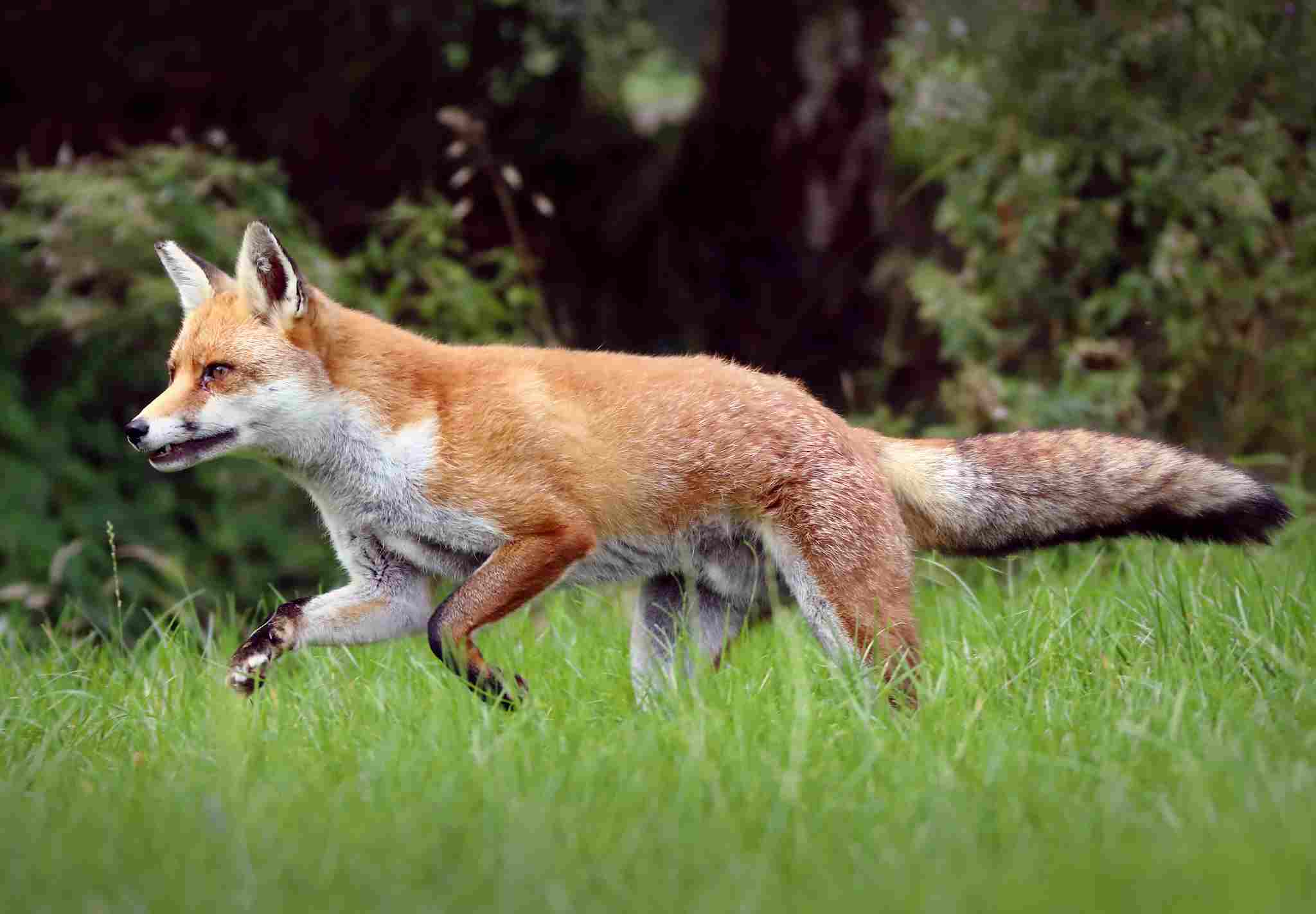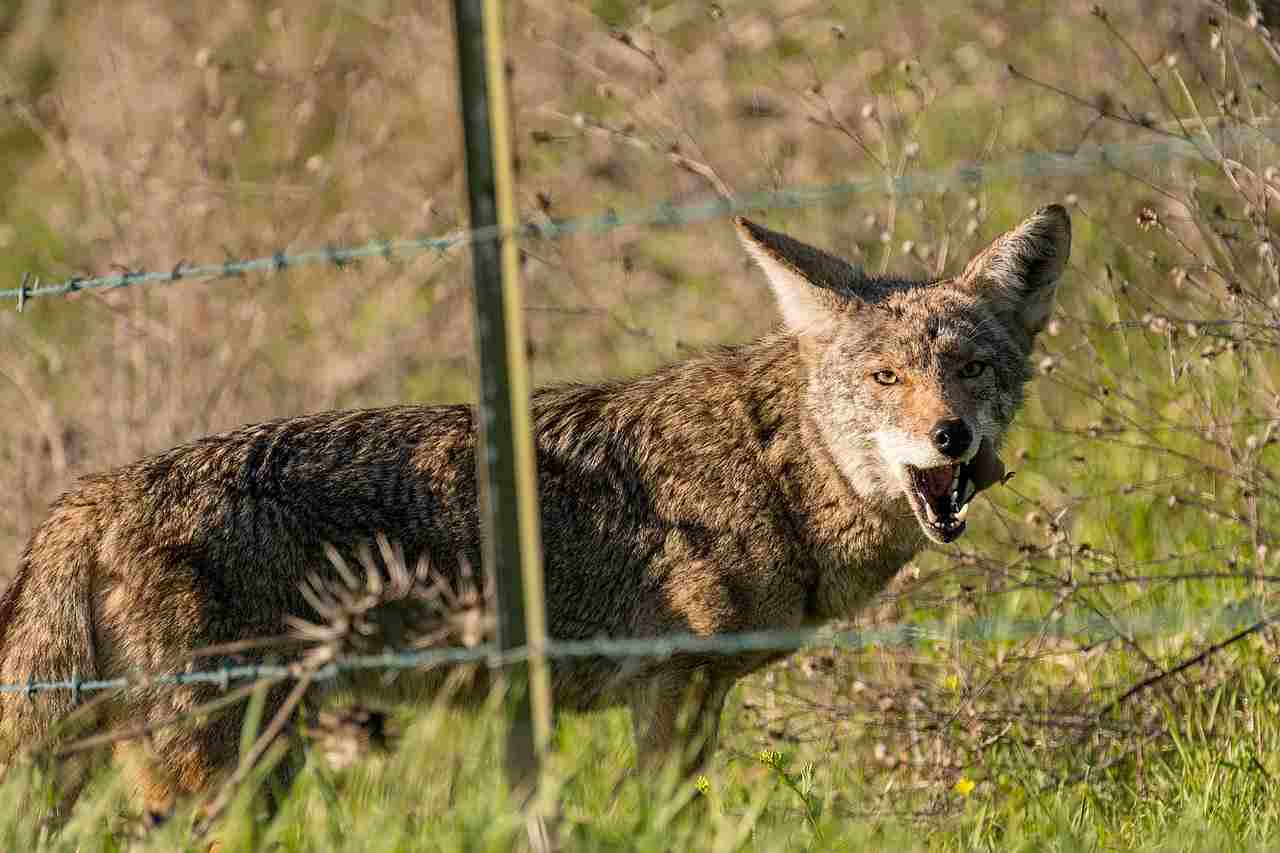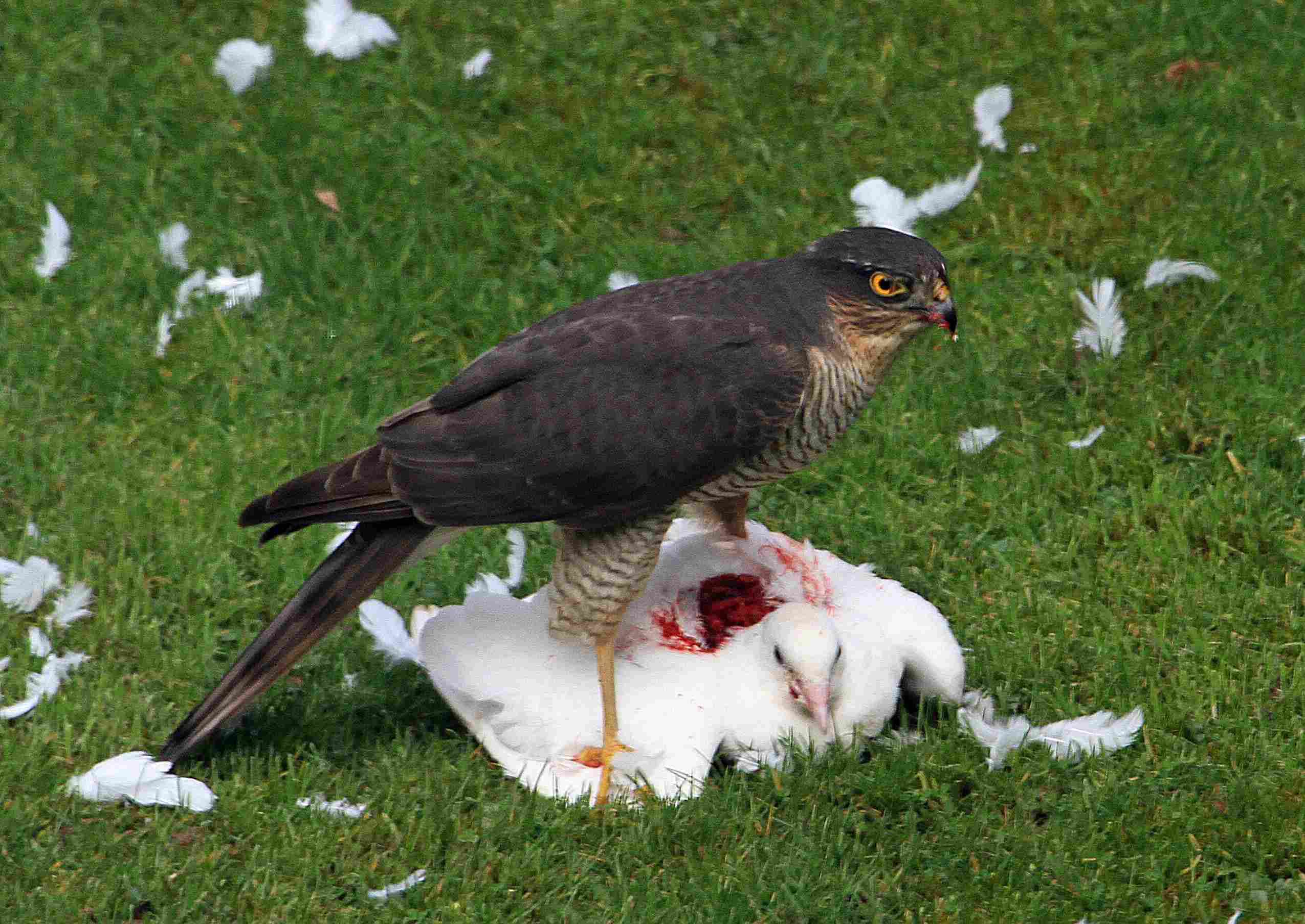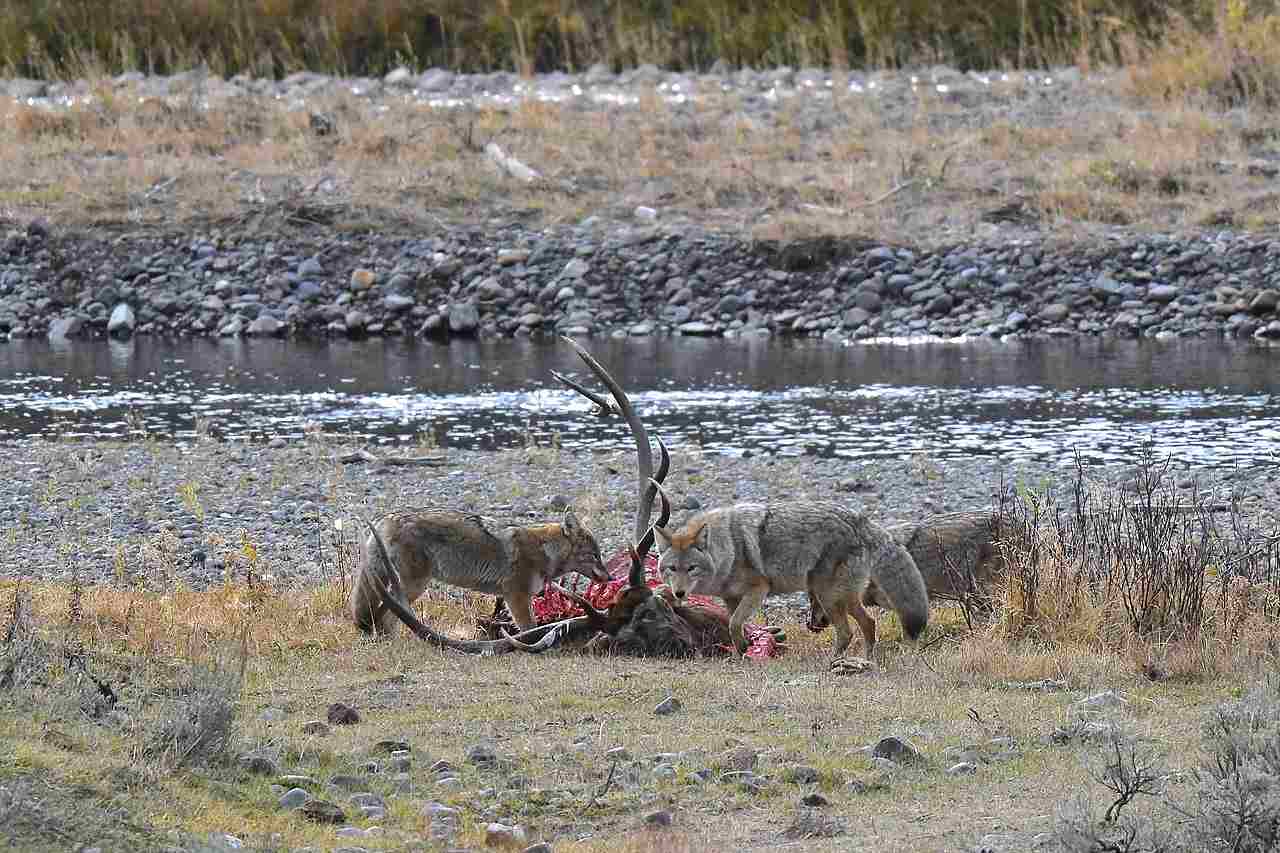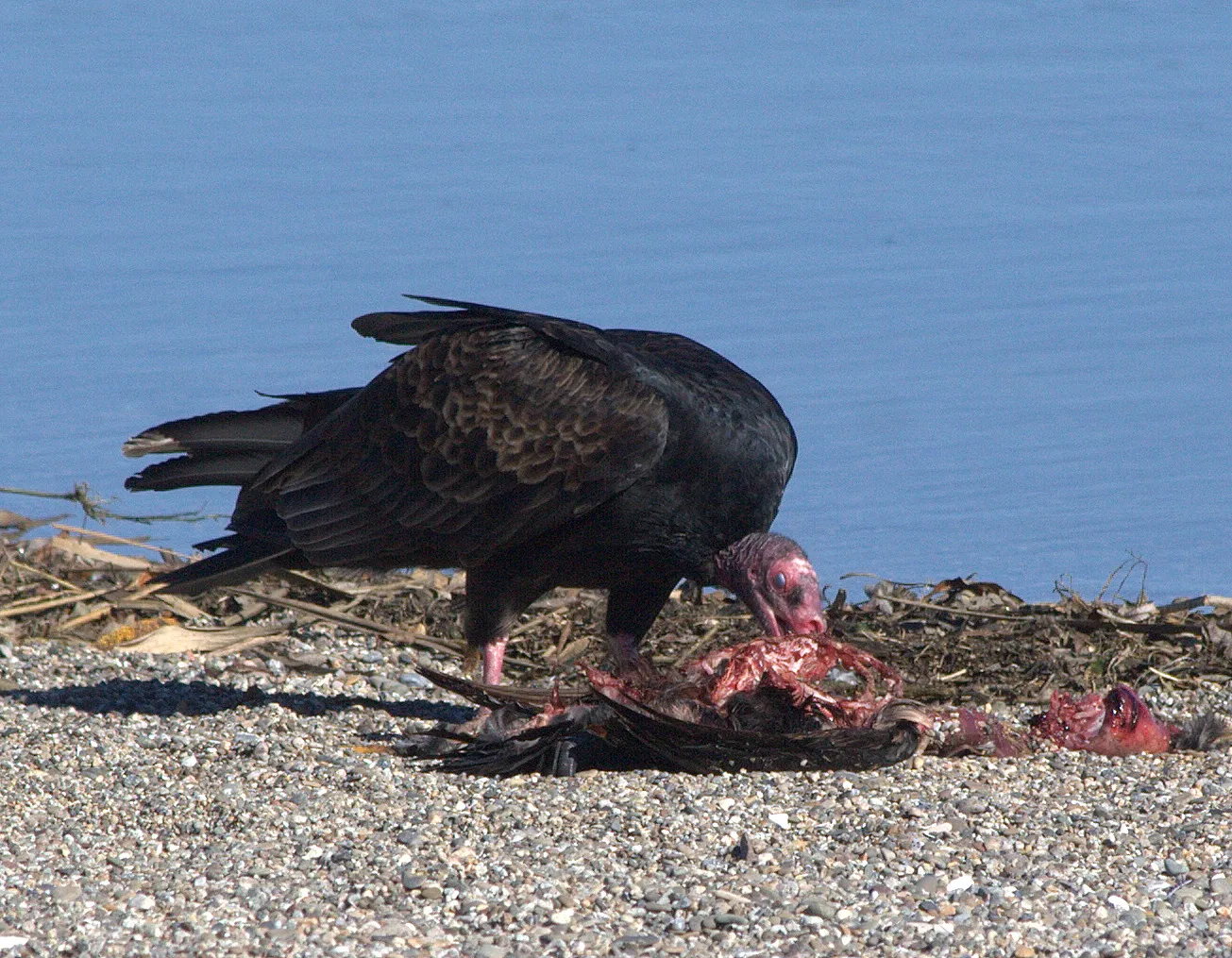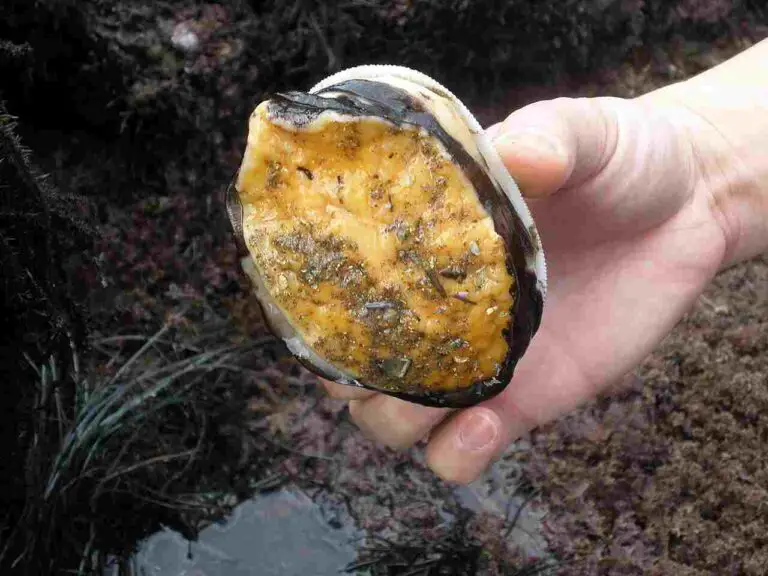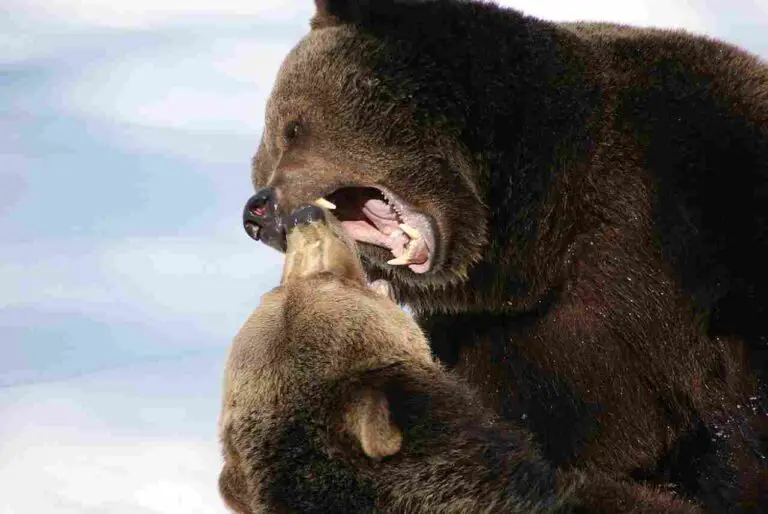7+ Scavengers In Wisconsin and Their Characteristics
Examples of scavengers in Wisconsin are bears, raccoons, opossums, foxes, vultures, bald eagles, beetles, hawks, and coyotes. These animals play crucial roles in the ecosystem by consuming carrion, garbage, and other waste, which helps in nutrient cycling, decomposition, and disease prevention. While scavengers like raccoons and coyotes can sometimes cause conflicts with humans by raiding garbage or entering urban areas, their presence is vital for maintaining a balanced and healthy environment. Proper waste management and secure garbage disposal are key to minimizing negative interactions with these opportunistic feeders.
1. Bear
Bears are large, powerful mammals known for their opportunistic feeding habits, and they are one of the most significant scavengers in Wisconsin. The American black bear, the most common bear species in the state, is an omnivore that adapts its diet to the seasonal availability of food. While they are proficient hunters and gatherers, bears are also skilled scavengers, using their keen sense of smell to locate food from miles away. They will consume carcasses, garbage, and other food waste, contributing to the natural recycling process in forested ecosystems.
In Wisconsin, bears typically scavenge for carrion left behind by other predators or that results from natural causes, such as animal deaths during harsh winters. Bears also raid human garbage bins and campsites, prompting residents and campers to adopt bear-proofing measures to minimize conflicts with these large animals. This scavenging behavior helps maintain ecosystem balance by removing decomposing organic material and limiting the spread of diseases and other pathogens.
The black bear’s scavenging habits are crucial for nutrient cycling in Wisconsin’s forests. By consuming carrion and other waste, bears help return nutrients to the soil, promoting plant growth and providing habitat for other wildlife. Although their scavenging can sometimes create conflicts with humans, bears play a vital role in the state’s ecosystems, illustrating the interconnectedness of wildlife and the environment.
2. Raccoon
Raccoons are highly adaptable scavengers found throughout Wisconsin, recognized for their distinctive black “mask” markings around the eyes and their ringed tails. These nocturnal mammals are resourceful foragers, capable of exploiting a wide variety of food sources, including fruits, nuts, insects, small animals, and carrion. However, raccoons are perhaps best known for their scavenging tendencies in urban and suburban areas, where they often raid garbage cans, dumpsters, and compost piles in search of food.
Raccoons’ ability to thrive in diverse habitats, from dense forests to bustling cities, is largely due to their intelligence and dexterity. They can open latches, manipulate objects, and problem-solve to access food sources, making them particularly effective scavengers. While this adaptability has led to some conflicts with humans—such as when raccoons damage property or spread disease—their scavenging helps clean up waste and reduces the need for other sanitation measures.
Despite their propensity for scavenging, raccoons play an important ecological role in Wisconsin. They help control insect populations by consuming a variety of invertebrates, and their activities aid in the dispersal of seeds from the fruits they eat. By scavenging for food, raccoons contribute to nutrient cycling and the overall health of their habitats.
3. Opossum
Opossums, the only marsupial native to North America, are versatile scavengers that are common in Wisconsin. Known for their hairless tails and white faces with pointed snouts, opossums are nocturnal creatures that primarily feed on a diet of insects, small animals, fruits, and other plant matter. However, they are also highly effective scavengers, consuming carrion, garbage, and other waste material, thus contributing to the cleanliness and health of their environment.
The opossum’s scavenging behavior plays a vital role in controlling pest populations and managing organic waste. By feeding on carrion and decaying matter, opossums help to reduce the spread of disease and contribute to the natural decomposition process. Additionally, they are known to eat ticks, which helps lower the risk of tick-borne diseases in areas where they are present.
Opossums’ scavenging habits are particularly beneficial in suburban and urban areas of Wisconsin, where they help clean up discarded food waste and garbage. Their presence in these areas can also serve as a reminder of the importance of proper waste management and the need to secure garbage to avoid attracting wildlife. Although opossums can sometimes be viewed as a nuisance due to their scavenging, they are a valuable part of Wisconsin’s ecosystem, providing natural pest control and waste reduction services.
4. Fox
Foxes, primarily the red fox and gray fox, are common scavengers in Wisconsin. These clever and resourceful mammals have a diverse diet that includes small mammals, birds, insects, and a variety of plant material. However, they are also skilled scavengers, often taking advantage of carrion and discarded human food to supplement their diet. Their adaptability to various environments allows them to thrive in both rural and urban areas, making them an integral part of Wisconsin’s ecosystem.
Foxes’ scavenging habits contribute to the health of their habitats by removing dead animals and other organic waste. In rural areas, foxes often scavenge roadkill and other carrion, helping to keep the environment clean and prevent the spread of disease. In urban settings, foxes are known to scavenge in garbage bins, compost piles, and other sources of food waste. While this behavior can lead to occasional conflicts with humans, it also underscores the importance of proper waste management and secure trash disposal.
In addition to their scavenging role, foxes are also important predators that help control populations of rodents and other small mammals, thereby contributing to a balanced ecosystem. Their scavenging behavior complements their hunting activities, allowing them to make efficient use of available resources. Despite their occasional conflicts with humans, foxes are valuable contributors to Wisconsin’s biodiversity and ecological health.
5. Vulture
Vultures are quintessential scavengers, and the turkey vulture is the most common species found in Wisconsin. With their bald heads, dark plumage, and keen sense of smell, vultures are uniquely adapted to locate and consume carrion. They play a crucial role in the ecosystem by cleaning up dead animals and recycling nutrients back into the environment. Vultures’ scavenging behavior helps prevent the spread of diseases that could arise from decomposing carcasses, thus contributing to the overall health of Wisconsin’s wildlife habitats.
Turkey vultures are often seen soaring in large circles as they search for food. Their excellent vision and acute sense of smell allow them to detect carrion from great distances. Once they locate a carcass, vultures will consume it almost entirely, including bones, helping to decompose and recycle the organic matter. This behavior not only reduces the spread of pathogens but also deters other scavengers that might not be as efficient at cleaning up carrion.
In Wisconsin, vultures are commonly found in rural and forested areas, where they play an essential role in maintaining ecological balance. While they are often misunderstood or considered unappealing due to their scavenging habits, vultures are critical to the health of the environment. They provide a natural waste management service that would otherwise require significant human intervention.
6. Bald Eagle
The bald eagle, America’s national bird, is a well-known scavenger in Wisconsin. Though primarily a predator, bald eagles frequently scavenge for food, taking advantage of carrion and other available food sources to supplement their diet. Their powerful talons and keen eyesight make them efficient hunters, but their opportunistic nature leads them to scavenge when the opportunity arises.
In Wisconsin, bald eagles are often seen near bodies of water, where they hunt fish and other prey. However, they also scavenge carrion, including roadkill and fish left behind by other predators. This scavenging behavior helps maintain a clean and healthy ecosystem by removing dead animals and reducing the risk of disease. Bald eagles’ scavenging tendencies are particularly notable during winter months when food sources are scarcer, and they rely more heavily on carrion for sustenance.
Bald eagles’ role as scavengers is essential in Wisconsin’s ecosystems, as they contribute to nutrient cycling and help control the spread of disease by consuming dead animals. Their presence in the environment is also a positive indicator of ecosystem health, as bald eagles are sensitive to pollutants and habitat changes. Although their scavenging behavior can sometimes lead to conflicts with other predators or human activities, bald eagles remain a revered and valuable part of Wisconsin’s wildlife.
7. Beetle
Beetles are a diverse group of insects with many species that serve as scavengers in Wisconsin’s ecosystems. One notable group of scavenging beetles is the carrion beetles, which specialize in consuming dead and decaying organic matter. These beetles play an essential role in breaking down dead animals and recycling nutrients back into the environment. Through their activities, they help to control the spread of disease and maintain the health of soil and plant life.
Carrion beetles, such as the American burying beetle, actively seek out carcasses and play a crucial role in decomposition. They often lay their eggs in or near decomposing matter, providing their larvae with a ready food source upon hatching. This behavior not only aids in the decomposition process but also accelerates nutrient cycling, contributing to the overall health of the ecosystem.
In Wisconsin, scavenging beetles can be found in various habitats, including forests, grasslands, and urban areas. Their presence is a critical part of the ecological balance, helping to manage organic waste and contribute to soil fertility. Although beetles are often overlooked due to their small size and inconspicuous nature, their scavenging activities are fundamental to maintaining a healthy environment.
8. Hawk
Hawks are renowned for their hunting prowess, but they also engage in scavenging behavior in Wisconsin’s diverse ecosystems. As raptors, hawks primarily hunt live prey, such as small mammals and birds, but they will readily scavenge when the opportunity arises. This opportunistic feeding behavior allows hawks to adapt to changing food availability and contributes to the cleaning up of carrion and other waste in their habitats.
One common scavenging hawk in Wisconsin is the red-tailed hawk. While these raptors are known for their impressive hunting skills, they often scavenge roadkill and other carcasses, especially during winter or when prey is scarce. By consuming carrion, hawks help reduce the spread of disease and aid in nutrient recycling, benefiting the surrounding ecosystem.
Hawks’ scavenging behavior in Wisconsin plays an important role in controlling pest populations and cleaning up the environment. While they are primarily predators, their ability to scavenge contributes to the ecological balance by ensuring that dead animals do not go to waste. Hawks are also an indicator of ecosystem health, as they are sensitive to environmental changes and pollutants, emphasizing the importance of their role in maintaining a balanced environment.
9. Coyote
Coyotes are highly adaptable scavengers in Wisconsin, with a diet that ranges from small mammals and birds to fruits and insects. While they are proficient hunters, coyotes often scavenge for food, taking advantage of carrion, garbage, and other food waste. This opportunistic feeding behavior has allowed coyotes to thrive in a wide range of habitats, from rural forests to urban areas, making them one of the most common scavengers in Wisconsin.
Coyotes’ scavenging habits play a critical role in maintaining ecological balance. By consuming carrion, they help clean up the environment and reduce the spread of disease. In urban settings, coyotes often scavenge in garbage bins and compost piles, contributing to natural waste management. However, this behavior can lead to conflicts with humans, emphasizing the need for secure waste disposal and proper management to avoid attracting coyotes to populated areas.
Despite their sometimes controversial reputation, coyotes are an essential part of Wisconsin’s ecosystem. Their scavenging activities contribute to nutrient cycling and help control populations of smaller predators and rodents. Coyotes’ adaptability and scavenging skills highlight the importance of maintaining a balance between wildlife and human activities, ensuring that these opportunistic scavengers continue to play their valuable role in the environment.
*Summary
-
Bear
-
Opportunistic feeders, consuming carrion, garbage, and other waste.
-
Help maintain ecosystem balance by removing decomposing organic matter.
-
Can cause conflicts with humans, especially in suburban and rural areas.
-
Important for nutrient cycling in Wisconsin’s forests.
-
-
Raccoon
-
Nocturnal scavengers with a wide-ranging diet including garbage and carrion.
-
Known for intelligence and adaptability to urban and suburban environments.
-
Play a role in controlling insect populations and dispersing plant seeds.
-
Conflicts with humans arise from raiding garbage and compost.
-
-
Opossum
-
North America’s only marsupial; scavenges carrion, garbage, and other waste.
-
Contribute to reducing the spread of disease by cleaning up dead animals.
-
Eat ticks, aiding in controlling tick-borne diseases.
-
Often found in urban areas, helping to manage waste and maintain cleanliness.
-
-
Fox
-
Red and gray foxes in Wisconsin are versatile scavengers.
-
Scavenge carrion in rural areas and garbage in urban settings.
-
Help control rodent populations, contributing to a balanced ecosystem.
-
Can create conflicts with humans due to their scavenging habits.
-
-
Vulture
-
Turkey vultures are common scavengers, consuming carrion.
-
Play a critical role in preventing the spread of disease by cleaning up dead animals.
-
Found in rural and forested areas, contributing to nutrient cycling.
-
Often misunderstood but provide essential ecological services.
-
-
Bald Eagle
-
National bird of the U.S.; primarily predatory but also scavenges carrion.
-
Known for scavenging roadkill and fish in Wisconsin’s environments.
-
Contribute to nutrient cycling and help maintain ecosystem health.
-
Sensitive to environmental changes, serving as an ecological indicator.
-
-
Beetle
-
Carrion beetles specialize in consuming dead and decaying organic matter.
-
Aid in decomposition and nutrient recycling, promoting soil health.
-
Often lay eggs in carcasses, providing a food source for larvae.
-
Found in various habitats, playing a crucial role in the ecosystem.
-
-
Hawk
-
Primarily predators, but scavengers as well, consuming roadkill and other carrion.
-
Red-tailed hawk is a common scavenging species in Wisconsin.
-
Scavenging behavior aids in nutrient cycling and environmental cleanliness.
-
Contribute to controlling pest populations and maintaining ecological balance.
-
-
Coyote
-
Highly adaptable scavengers, consuming a wide variety of food sources.
-
Scavenge carrion in rural areas and garbage in urban settings.
-
Help control rodent populations and contribute to nutrient cycling.
-
Can create conflicts with humans due to their opportunistic behavior.
-
| Scavenger |
Characteristics and Role in Wisconsin Ecosystems
|
| Bear |
Opportunistic feeders, consume carrion, garbage, other waste. Contribute to ecosystem balance and nutrient cycling. Conflicts with humans due to raiding garbage and campsites.
|
| Raccoon |
Nocturnal scavengers with adaptable diets, including garbage and carrion. Thrive in urban areas. Play a role in insect control and seed dispersal. Can cause property damage and spread disease.
|
| Opossum |
Scavenge carrion, garbage, and other waste. Reduce disease spread by cleaning dead animals. Consume ticks, aiding in tick control. Present in urban areas, contributing to waste management.
|
| Fox |
Red and gray foxes scavenge carrion in rural areas, garbage in urban settings. Help control rodent populations. Potential conflicts with humans due to scavenging habits.
|
| Vulture |
Turkey vultures consume carrion, aiding in decomposition and nutrient cycling. Found in rural and forested areas. Help prevent the spread of disease by cleaning up dead animals. Often misunderstood but vital to the ecosystem.
|
| Bald Eagle |
Primarily predators but also scavengers, often consuming roadkill and fish. Contribute to nutrient cycling and ecosystem health. Serve as an ecological indicator due to sensitivity to pollutants and habitat changes.
|
| Beetle |
Carrion beetles specialize in consuming dead and decaying organic matter. Aid in decomposition and nutrient recycling. Found in various habitats, playing a key role in maintaining ecological balance.
|
| Hawk |
Predators and scavengers, consuming roadkill and other carrion. Red-tailed hawks are common scavengers in Wisconsin. Scavenging contributes to nutrient cycling and environmental cleanliness.
|
| Coyote |
Highly adaptable scavengers with diverse diets, including carrion and garbage. Help control rodent populations and contribute to nutrient cycling. Conflicts with humans arise from scavenging behavior in urban areas.
|
Frequently Asked Questions (FAQs) About Scavengers in Wisconsin
Q1: What is a scavenger, and why are they important?
-
A scavenger is an organism that feeds on dead or decaying organic matter. They are important because they help decompose and recycle nutrients back into the environment, preventing the spread of diseases and maintaining ecological balance.
Q2: Are scavengers harmful to humans?
-
Generally, scavengers are not harmful to humans. However, some scavengers, like raccoons or coyotes, can cause conflicts if they raid garbage or damage property. It’s crucial to secure trash and avoid attracting scavengers to minimize these conflicts.
Q3: Why do bears in Wisconsin scavenge in garbage bins?
-
Bears are opportunistic feeders, meaning they seek food from various sources. As human settlements expand into their habitats, garbage bins and other sources of food waste become more accessible to bears. Properly securing garbage and using bear-proof containers can reduce these incidents.
Q4: How do vultures contribute to ecosystem health?
-
Vultures play a key role in maintaining ecosystem health by consuming carrion. They help prevent the spread of disease by cleaning up decomposing animal carcasses, contributing to nutrient cycling, and keeping the environment clean.
Q5: What should I do if I encounter a scavenging animal like a coyote or raccoon near my home?
-
Keep your distance and avoid approaching the animal. Ensure that garbage and food waste are properly secured to discourage scavengers from returning. If you notice unusual or aggressive behavior, contact local wildlife authorities for assistance.
Q6: Can scavengers like beetles and opossums help control pests?
-
Yes, beetles like carrion beetles contribute to decomposition, while opossums consume ticks and other insects, helping control pest populations. Their scavenging behavior indirectly aids in managing pest-related issues.
Q7: Are scavengers like hawks and bald eagles endangered?
-
Bald eagles are no longer endangered but are protected under the Bald and Golden Eagle Protection Act. Hawks are not endangered, but some species are protected. Conservation efforts have helped increase the populations of these raptors, allowing them to continue their scavenging roles in the ecosystem.
Q8: How can I prevent scavengers from becoming a problem in my area?
-
Secure garbage bins with tight-fitting lids, avoid leaving food outside, and keep compost piles enclosed. Consider using motion-activated lights or noise-making devices to deter scavengers. By reducing food sources, you can minimize the chances of attracting scavengers.
Q9: What should I do if I find a scavenger injured or in distress?
-
Contact local wildlife rescue or animal control services. Do not attempt to handle or approach the animal, as it may be injured or stressed. Trained professionals can ensure the animal’s safety and well-being.
